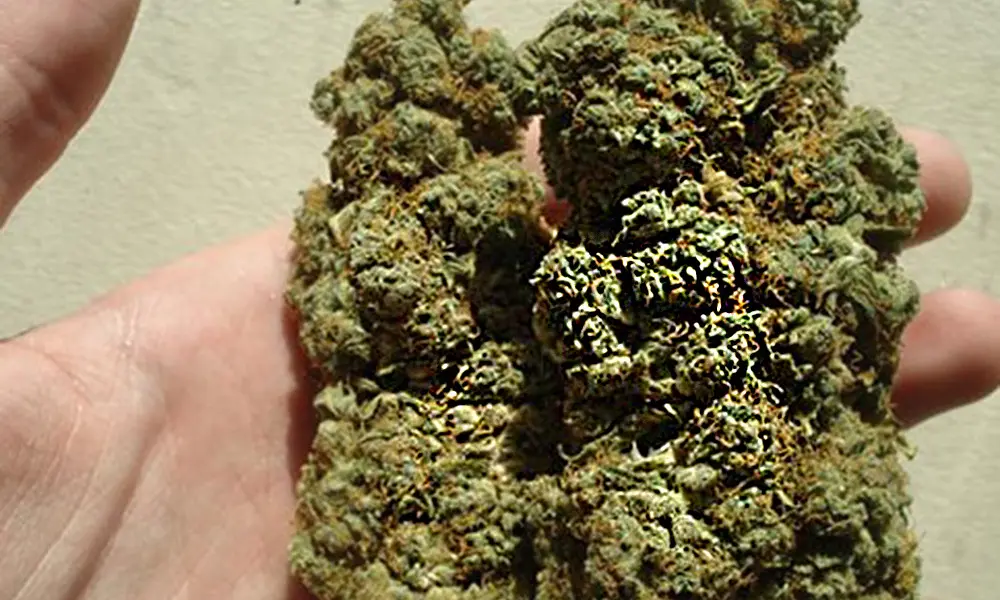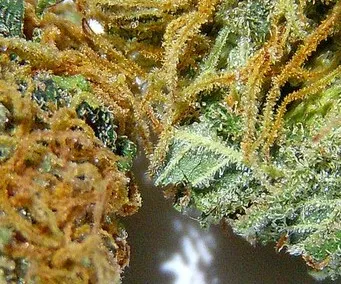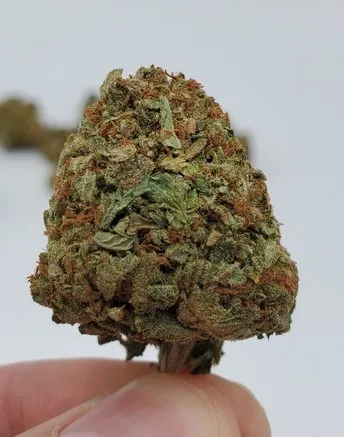Cannabis comes in a variety of varietals, commonly known as strains, much like avocados, apples, potatoes, and other commercial crops. Consider Haas, McIntosh, or Russet—only with cannabis instead of wine.
Strains have a long and illustrious history. A feral annual plant in Central Asia about 15,000 years ago was the common ancestor of all strains throughout history.
The oldest cannabis strains are referred to as landraces, which is an umbrella term for any genetically unique varietal that is native to a certain geographical location and has—through a long period of time and isolation—adapted to the area’s climate and traditional cultivation methods. Natural acclimation is a component of the process, but local cannabis growers have also developed these landraces by selecting individual plants that demonstrate desirable characteristics such as drought tolerance in a dry climate or mold resistance in a humid environment with chilly nights and dense fog.
The nomenclature of many landrace cannabis strains is based on their region of origin, such as Panama Red, Maui Wowie, and Malawi Gold. According to most experts, the cannabis species originated as a feral annual plant in Central Asia approximately 15,000 years ago and subsequently spread worldwide via ancient trade routes, which means that all strains throughout history share a single ancestor.
The oldest marijuana smokers in North America were probably Mexican, Caribbean, and southern-hemisphere landrace strains. Back in those pre-sinsemilla days (1900–1970), every sack of grass came with a generous amount of free seeds, but they wouldn’t grow well in northern regions. Pure sativas take longer to mature than indicas and require a longer growing season as a result—a problem that became increasingly critical throughout the United States when the War on Marijuana was focused on border patrols and shutting off foreign supply lines.
The earliest marijuana smokers in North America were likely to be found puffing on pure sativa landrace strains.
Demand for cannabis began to rise in the late 1960s, and the situation grew so dire that there were well-publicized cannabis shortages. Then enterprising cannabis breeders in California and elsewhere figured out that by crossing these landrace sativa strains with landrace indica strains obtained from Nepal, Afghanistan, and other locations along the already-popular Hippie Trail, they could make hybrids with the greatest qualities of both subspecies. As a result, homegrown American marijuana became the envy of the planet.
How did we go from a small collection of landraces to Zkittlez and Blue Dream? Through a chain of incredible breeding leaps that were mostly hidden behind a thick curtain of prohibition. So be aware that while it’s true that John McIntosh discovered the McIntosh apple in 1811 in Canada, the tales of the greatest cannabis breeders are considerably murkier (which is to be expected when your creative output is illegal). As a result, please forgive any omissions in the backstory of these seven game-changing cannabis strains (and contact us if you have information you believe we’ve overlooked).
The rise of the mass market and its subsequent move to more expensive strains with distinct flavors, like #5 Northern Lights, made it possible for people who had previously avoided cannabis because of its high cost to sample something greater.
Legacy Strains: Skunk #1
The first skunk #1, was instrumental in paving the way for US cannabis growers to become self-sufficient.
Skunk #1 stands out for its pungent, skunky scent and was developed through several generations by combining diverse genetic components from three major landraces – Afghani, Acapulco Gold, and Colombian Gold. This historic achievement in cannabis breeding revolutionized the industry by paving the way for US cannabis producers to be self-sufficient while also delivering one of the most joyously uplifting highs of all time by merging the short flowering period and massive harvest of Afghani (an indica) with the lofty high of the two sativas.
Cheese and Super Silver Haze, two well-known second-generation strains, were both developed from Skunk #1. In the United Kingdom, “skunk” is still a common term to designate any high-potency strain.
Legacy Strains: Northern Lights #5
Northern Lights #5 was the fifth of its name, a fact that reflects its origins. The first variety known as Northern Lights was 100% indica, the product of crossing several Afghani landraces. Northern Lights #1 was very unique in its day because it was bred for high potency, fast growth, and a high bud-to-leaf ratio desired by farmers.
The fifth generation of the strain, at least to those in the know, is a bit of Thai landrace sativa that leaked into the genetic makeup during production. Sensi Seeds took home the Cannabis Cup in Amsterdam with the strain in 1989, 1990, and 1992, while also producing significant quantities of NL#5 seeds that would be distributed all over the world.
The #5 strain of the Lights Up North collection, nicknamed the Green House Monster, was a completely kick-ass variety that was simple to cultivate both indoors and outdoors in a wide range of climates. As a result, it inspired numerous home grower enthusiasts and underground commercial growers to produce it, allowing the mass market to develop an appreciation for something far superior than their usual trash.
Legacy Strains: Neville’s Haze
The classic Haze strain was produced in the 1970s and delivered one of the most electric, uplifting, cerebral highs of all time, but it didn’t hit game-changing until the 1980s.
The Haze strains were originally developed in the late 1960s, when a group of pioneering seed breeders known as The Haze Brothers found that the unique microclimate in Santa Cruz, California allowed them to cultivate heavily sativa-dominant hybrids. Blessed with a lengthy, dry, and mild fall season, those forward-thinking Haze Brothers rapidly became underground-famous among local heads for developing and growing Original Haze, a hybrid strain that combined landrace DNA from Thailand, Mexico, and Colombia.
“The stuff they cultivate in Northern California is mostly indica, but it’s picked early to get it in before the frost. Because our flowers pump out resin until December [in our county], we grew Haze pot from sativa seeds, according to one of the Haze Brothers.”
Haze is a slow-to-maturing, tall, and fussy plant that made up for it by providing one of the most electric, uplifting, cerebral highs of all time, as well as a distinct piney aroma and flavor that anyone who’s tried cannabis knows. However, it wasn’t until the 1980s that Original Haze entered Amsterdam that it became an unforgettable head experience or the world’s greatest head stash. A grower in California named Neville modified it until he refined a strain that was both easier to cultivate and had less THC. After that, Neville created a large number of Haze seeds and sent them all around the world.
The strain formerly known as Bubba Kush has undergone a variety of name changes since its inception, but it is still widely recognized by cannabis fans all over the world. OG Kush is credited with revolutionizing the game as the first strain of the hybrid era to become a cultural touchstone.
Legacy Strains: OG Kush
Finally, we have reached the second era of hybrid development, when cannabis breeders began crossing hybrids with one another in the hopes of generating a miracle variety that would surpass the combined skill and merit of its parts. Which brings us to one of history’s most famous strains.
Now, recall when we said that the tale of hidden cannabis growing is sometimes murky? Nothing illustrates that point better than the life story of OG Kush, which— thanks to a slew of rap lyrics—took its start from modest origins and unknown parentage before reaching the top echelon of cannabis strain pantheon.
According to the most reputable sources, OG Kush began life as a cutting smuggled from Florida to the West Coast and known as Krippy—a generic term for great marijuana. After the strain reached Los Angeles, and into the hands of grower JoshD, its genetics were disseminated across the west coast.
Urkle, a strain of Durban Poison that is a cross between OG Kush and Skunk, changed the game when it was the first hybrid strain to become a cultural touchstone, following in the illustrious footsteps of larger-than-life landraces like Panama Red and Acapulco Gold.
Legacy Strains: Sour Diesel
Sour Diesel was the game-changer in two ways: first, by reintroducing sativa and second, by establishing himself as the East Coast’s major player.
The powerful odor and flavor of Sour Diesel, which is every bit as sour and diesel-like as the name implies, but in a way that you just can’t get enough of. It’s a quick-to-develop taste, undoubtedly owing to the fact that when you smell it, you’re about to get incredibly high in an entertaining, creative way.
Sour Diesel is regarded to be a cross between Chemdawg and Super Skunk, and it revolutionized the game in two ways. First, much as Justin Timberlake resurrected sex appeal with his comeback album Justified, Sour Diesel brought sativa back into vogue. indicas produce faster and have greater yield, so most current cannabis cultivators stayed with indica strains until Sour D (as it became known) appeared in the mid-1990s and began fetching such a high price that it sent the entire cannabis market into a wonderful new direction.
It was also the first East Coast strain to achieve widespread popularity. Little is known about where it originated, but we do know that—like many upstart hopefuls from all across the world—it came to New York City in order to succeed.
The movie has helped change the game by becoming the catalyst for a long-term purple cannabis faze, which gave rise to The Purps, Grape Ape, and many other strains.
Legacy Strains: Granddaddy Purple
While in high school, Ken Estes was recognized as both a student and an athlete, but he suffered a motorcycle accident shortly after graduating that left him paralyzed from the neck down. After spending six months in a rehabilitation center doped up on pharmaceuticals, he befriended another disabled Vietnam veteran there who gave him some cannabis.
At the High Times Medical Cannabis Cup in 2011, Estes’ Bay 11 strain won first place. However, he will always be known for Granddaddy Purple, a strain he claims was given to him by a long-time Humboldt County grower.
GDP is widely recognized for its deep purple color, but it also revolutionized the game by igniting a long-term craze for purple cannabis, which gave rise to The Purps, Grape Ape, and other popular strains. Sweet grape notes were added as a balance to the acrid diesel undertones associated with OG Kush and Sour Diesel, helping future breeders steer clear of those characteristics.
Legacy Strains: Sour Tsunami
Cannabidiol (CBD), one of the cannabis plant’s most valuable therapeutic components, is now accessible in a variety of CBD-rich strains including ACDC, Cannatonic, and Harlequin. However, CBD was nearly extinct from the cannabis gene pool because THC’s second-best known cannabinoid counteracts its psychoactive effects.
The first stabilized CBD-rich strain in California was the Sour Tsunami, developed by Lawrence Ringo.
CBD is less likely to contain a high THC concentration, so it will not make you feel intoxicated. CBD does not produce the same highs as THC. As a result, for decades underground breeders unintentionally eliminated CBD from their strains, leaving just trace amounts. Project CBD, a non-profit organization formed in 2010 by researchers and activists working on Project CBD, became aware of the therapeutic advantages of CBD. Project CBD has worked with California’s commercial cannabis testing labs to identify any bud testing high in CBD, and as a result, it has established a breeding stock of high-CBD strains.
The cannabis Sour Tsunami—developed by Southern Humboldt Seed Collective’s Lawrence Ringo—broke the mold by being the first CBD-rich strain in California to be stabilized. Unfortunately, Ringo is no longer with us, but his legacy endures: CBD is now revered by patients as diverse as pediatric epilepsy and anxiety disorders to chronic pain treatment.
In an interview with O’Shaughnessy’s, Ringo described how Sour Tsunami came to be in great detail. It’s worth reading both to understand the hardwork and devotion behind cannabis breeding, as well as the love and passion that drive it.



